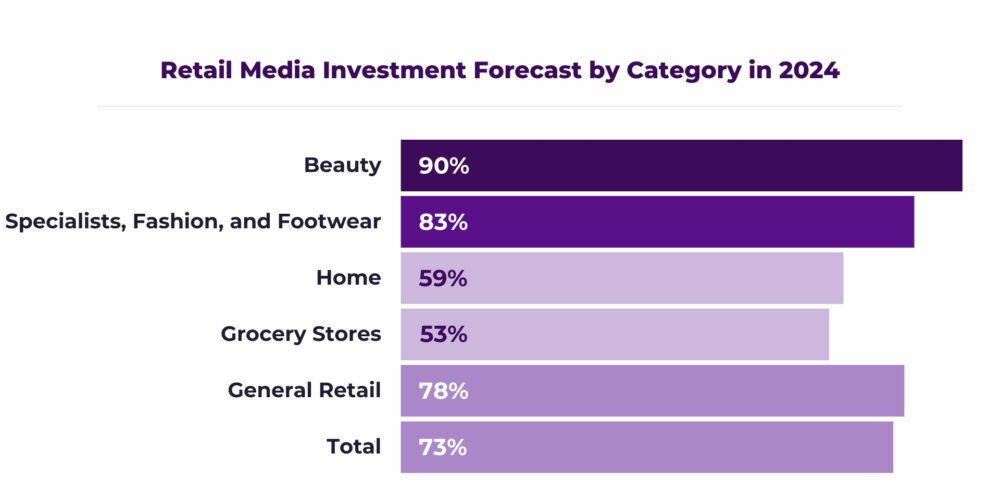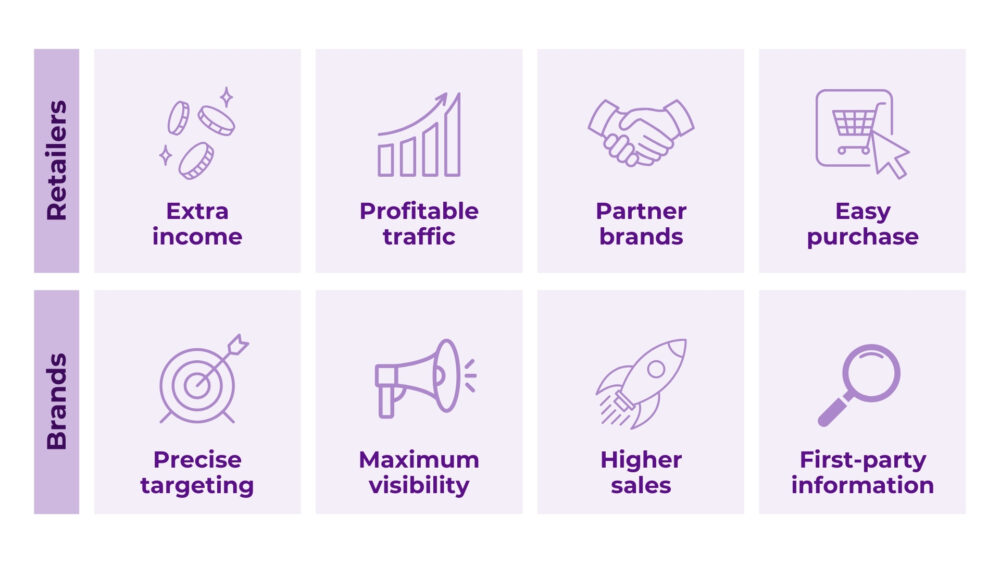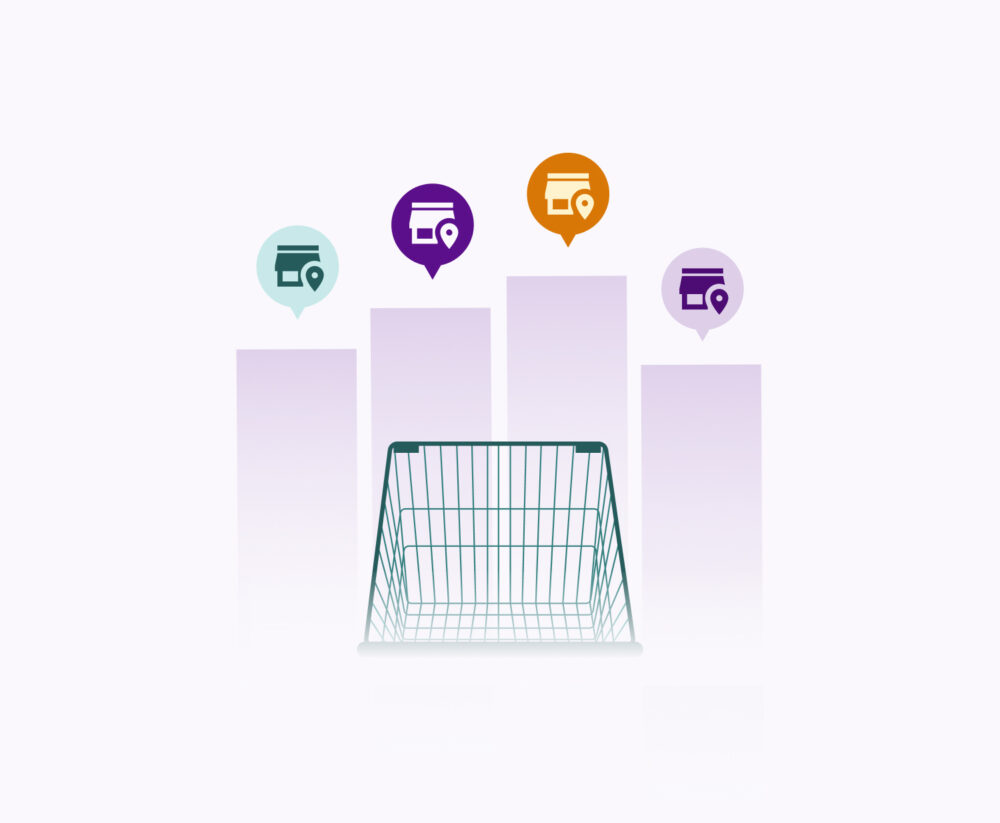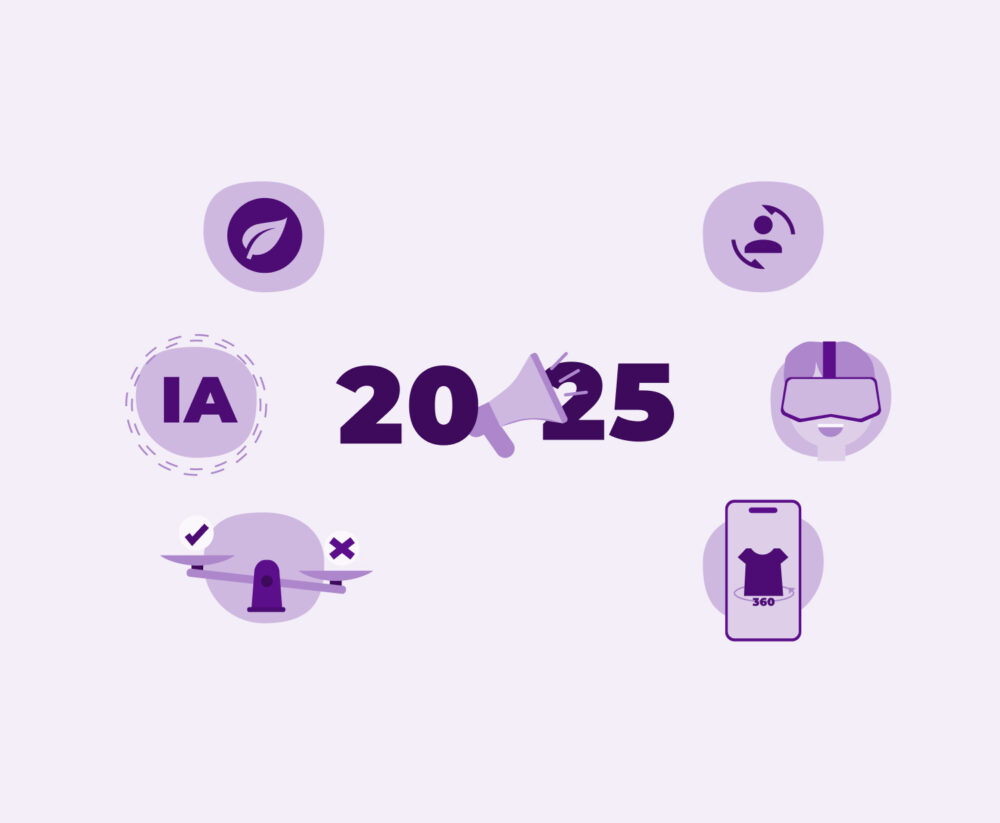The Evolution of Retail Media in Spain: An In-Depth Analysis
Introduction: The Unstoppable Rise of Retail Media in Spain
In recent months, have you noticed an increase in the number of ads appearing on your favourite online stores? And not just the quantity, have you noticed that the ads are more personalized and better aligned with your tastes and needs? This is Retail Media in action, and it’s transforming how brands and retailers connect in Spain.
Retail Media, which involves the placement of ads by brands within retailers’ e-commerce websites or apps with the aim of influencing the purchase decision of the customer at the point of sale, is experiencing exponential growth globally and, in particular, in the Spanish market. The scale of this trend is evident in the fact that over 90% of advertisers are already collaborating with retailers to reach both existing and potential consumers.
This boom in Retail Media in Spain is not isolated. It is intrinsically linked to the increasing digitalization of the retail sector and the vast amount of 1st-party data that retailers possess about their customers. In an environment where personalized advertising is key to success, Retail Media allows brands to connect with consumers in a highly relevant and effective way.
In this article, we will analyse how Retail Media has evolved in Spain, explore its current situation and discuss its future prospects.
A Look Back: The Evolution of Retail Media in the Spanish Context
The evolution of Retail Media in Spain has been marked by the influence of global trends and adaptation to the particularities of the local market. In its early stages, it might have taken more rudimentary forms: promotions in physical stores or banners on the nascent e-commerce websites. However, the real transformation began to consolidate with the rise of e-commerce and the increasing sophistication of digital advertising technologies.
The emergence and success of global giants such as Amazon Ads played a crucial role in raising awareness of and adoption of Retail Media in Spain. Amazon’s ability to offer advanced segmentation based on purchasing data and customer behaviour set a standard, paved the strategic way for other retailers and demonstrated the potential of this advertising model.
The growth of e-commerce in Spain provided the ideal breeding ground for the expansion of Retail Media. As more Spanish consumers became accustomed to shopping online, retailers began to recognize the value of monetizing the traffic on their websites and apps. This led to the emergence of Spanish Retail Media Networks, seeking to capitalize on their own customer data and knowledge of the Spanish market. This development indicates a maturation of the market, offering brands more options to reach consumers through this channel.
Snapshot of the Present: The Current State of Retail Media in Spain (Key Figures and Data)
Retail Media has ceased to be a mere promise and has become a tangible and significant reality within the Spanish advertising landscape. According to the IAB Spain Digital Media Advertising Investment Study 2024, investment in Retail Media in Spain reached €436.3 million. This figure confirms that Retail Media is here to stay and represents a considerable portion of digital advertising spending in the country.
Globally, it is also experiencing a boom. According to GroupM’s projections in its report This Year, Next Year 2023, Retail Media is expected to account for 15.4% of global advertising investment by 2028, exceeding even investment in television (including Connected TV—CTV). This marks a fundamental shift in the dynamics of the advertising market internationally.
While the IAB Spain study does not break down investment by specific categories, a McKinsey & Company report cited by Distribución Actualidad provides a forecast of Retail Media investment by category in 2024, highlighting the “Beauty” and “Fashion” categories:

Source: Retail Media Report 2024 – Distribución Actualidad
The adoption of Retail Media platforms by retailers is also a key indicator of the current state of the market. While there is no specific data for Spain, in 2022, 58% of retailers globally were already using these types of platforms. This only anticipates continued growth.
In short, current investment figures and growth projections confirm that Retail Media in Spain is experiencing rapid expansion and has enormous future potential.
The Key Players: Main platforms and actors in Retail Media in Spain
The Retail Media ecosystem in Spain is made up of a variety of players, from large global platforms to local retailer networks and technology providers. Understanding who these players are is essential for any brand or retailer looking to enter or expand their presence in this market.
As we explained in a previous article, Retail Media Networks in Spain are divided into three blocks:
- Global networks: Platforms of large retailers with a global presence, such as Amazon Ads or Carrefour.
- Networks operating in several European countries: such as the MediaMarktSaturn or Mano Mano networks.
- Retailer networks operating only in Spain: such as PC Componentes and its PCAds platform or the supermarket chain DIA.
In addition to these platforms, there are other crucial players in the Retail Media ecosystem in Spain. Advertising agencies, such as GroupM and Publicis, are developing specific capabilities to manage Retail Media campaigns, acting as intermediaries between brands and retailer networks. Technology vendors, such as Criteo, CitrusAd and Topsort, provide the technological infrastructure that enables the execution and measurement of campaigns. Finally, Retail Media aggregators are also emerging, such as Reetmo, RetailAds and Shopvertising, which help brands connect more effectively with consumers through multiple retailers.
The diversity of platforms and players in the Spanish market offers a wide range of options for implementing Retail Media strategies, adapting to the specific needs and objectives of brands and retailers.
Trends and Challenges that will Shape the Future
The future of Retail Media is shaping up to be a territory full of possibilities, but also challenges that demand creativity and adaptability. The explosion of data and the shift in consumer preferences have put the sector at a key moment. What happens now will define its long-term impact. How can brands make the most of these opportunities without losing sight of the growing demands of consumers? What innovations are leading the change and what are the barriers that could hinder their potential?
Trends
Retail Media in Spain is not a static sector but is constantly evolving, driven by a series of key trends that will define its future:
- Personalization and data utilization: Retailers are increasingly leveraging their first-party data to deliver hyper-personalized ads to consumers and reach high-intent audiences at the right time.
- Omnichannel integration: Retail Media is no longer limited to the online environment but is extending to physical stores, creating smoother and more connected shopping experiences.
- Off-site expansion: Retailers are using their data to allow brands to advertise on third-party platforms. This significantly expands the reach of Retail Media campaigns.
- Increased programmatic adoption: The automated buying and selling of Retail Media inventory through programmatic platforms is facilitating the integration of this channel into the digital marketing strategies of agencies and advertisers.
- Demand for measurable ROI: Brands are seeking metrics that go beyond the simple click and allow them to understand performance at all stages of the conversion funnel.
- Integration of AI and automation: AI allows for the analysis of large volumes of data and the delivery of personalized recommendations in real time. Its use allows advertising campaigns to be fully optimized.
- More engaging video and content formats: These formats capture consumer attention better and allow the value of the product to be demonstrated more effectively.
These trends point towards a more sophisticated, integrated Retail Media future in Spain, focused on the intelligent use of data to deliver relevant and effective advertising experiences to consumers.
Challenges
Despite the numerous opportunities it offers, the successful implementation of Retail Media in Spain also presents a series of important challenges and considerations:
- Increasing market saturation and growing competition: As more brands and retailers recognize the value of Retail Media, competition for consumer attention intensifies, which can lead to a reduction in advertising effectiveness.
- Data privacy and regulatory compliance: It is fundamental to ensure compliance with regulations when using customer data for advertising and to maintain transparency about how this data is used.
- Technology integration and other systems: Retailers must ensure that their advertising platforms are aligned with the needs of brands, which may require significant investment in technology and training.
- Lack of standardization of metrics across different platforms: This makes it difficult to compare campaign performance across different networks and effectively evaluate ROI.
At flipflow, we have overcome this last challenge with our development of the Retail Media Data Analysis functionality, thanks to which you can integrate all the data from your Retail Media campaigns into our platform and cross-reference it with our market data to perform a more powerful and precise analysis. Feel free to contact us if you want to know more about this possibility.
Golden Opportunities: Why Retail Media is Crucial for Brands and Retailers?
Retail Media has become a crucial tool for both brands and retailers in the Spanish market, offering a number of significant opportunities for both.
For retailers, Retail Media represents a new revenue stream with very high margins. This allows them to monetize the traffic on their websites and mobile apps and strengthen their relationships with brands. Furthermore, by offering relevant advertising to their customers, they can improve the shopping experience and obtain valuable data on consumer behaviour.
For brands, it offers the opportunity to achieve precise targeting of high-intent consumers at the precise moment of decision. This translates into greater visibility at the point of sale, higher conversion rates and better ROI. It also provides access to valuable first-party insights and allows them to adapt to the post-cookie era.
Conclusion: The Continued Impact and Potential of Retail Media in Spain
Throughout this analysis, we have explored the profound evolution that Retail Media is undergoing in the Spanish market. From its beginnings, with more basic strategies, to its consolidation and sophistication, Retail Media has transformed the relationship between brands, retailers and consumers.
With its ability to optimize advertising investment, personalize experiences and maximize impact at the point of purchase, Retail Media is poised to lead the next stage of digital advertising. However, its future will depend on how brands and retailers address challenges such as privacy, competition and technological integration.
In this scenario, businesses that can take advantage of opportunities and remain agile in the face of emerging trends will stand out and play a key role in defining this growing market. Retail Media is not just a tool for the present, but a strategic investment for building the future of advertising in Spain.





